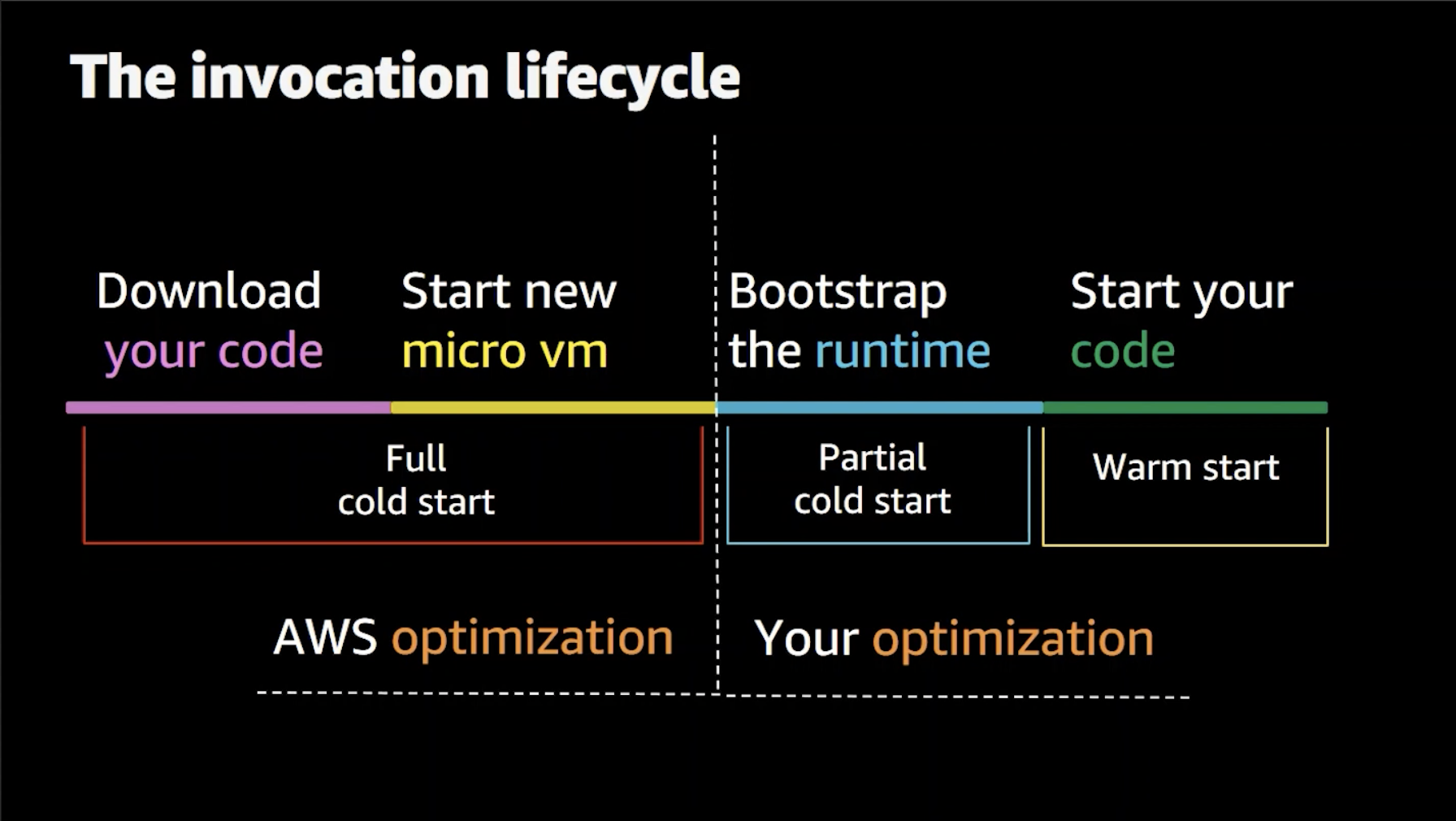Using observability to scale AWS Lambda
bene@theodo.co.uk
Ben Ellerby


@EllerbyBen




Ben Ellerby


@EllerbyBen
http://serverless-transformation.com/

https://www.theodo.co.uk/experts/serverless

Alex White

@agwhi_

@EllerbyBen
Serverless


What is this Serverless thing?
-
Architectural movement
- “allows you to build and run applications and services without thinking about servers” — AWS
- Developers send application code which is run by the cloud provider in isolated containers abstracted from the developer.
- Use 3rd party services used to manage backend logic and state (e.g. Firebase, Cognito)
- A framework with the same name

@EllerbyBen

Why Serverless?
💰 Cost reduction
👷♂️ #NoOps... well LessOps
💻 Developers focus on delivering business value
📈 More scalable
🌳 Greener

@EllerbyBen

Not just Lambda (FaaS)



Lambda
S3
Dynamo

API Gateway
Compute
Storage
Data
API Proxy

Cognito
Auth

SQS
Queue
Step Functions
Workflows


EventBridge
Bus

@EllerbyBen

Power and Flexibility to build...








@EllerbyBen

Optimising Lambda during Development

@agwhi_



@agwhi_


https://levelup.gitconnected.com/aws-lambda-cold-start-language-comparisons-2019-edition-%EF%B8%8F-1946d32a0244

@agwhi_

Improving performance
- Reduce cold starts
- Power tuning
- Architecture/code

@agwhi_

Cold Starts
- Code hasn't been executed in a while
- Scaling up
- Rebalancing across availability zones
- Updating code/config flushes

@agwhi_

Improving Cold Starts

Frequency

Duration

@agwhi_



@agwhi_

Provisioned Concurrency


@agwhi_

Duration

Measuring with x-ray

@agwhi_


@agwhi_

Cold Starts times
- Package size
- Runtime
- Amount of code
- Amount of initialisation work

@agwhi_

Reducing Duration
- Avoid monolithic functions
- Minify code
- Webpack
- Optimise imports
- Only import the parts of the library you're using
- lazyload dependencies that might not be used
HTTP Keep-Alive
- Reuse TCP connections between requests
- Reduce DynamoDB operation from 30ms to 10ms
- Easy to set up


@agwhi_

Power Tuning

@agwhi_

Memory = Power


@agwhi_


Power Tuning
https://github.com/alexcasalboni/aws-lambda-power-tuning

@agwhi_

Power Tuning
- Data-driven cost and performance
optimisation - Available as an AWS Serverless
Application Repository app - Can integrate with CI/CD

@agwhi_



Input
Output

@agwhi_


CPU-bound example

@agwhi_

Architecture/Code

@agwhi_


Distributed Tracing

@agwhi_

Common mistakes
- Fetching more data than you need
- Not using related services well
- Scans in dynamoDB
- Defaulting to synchronous execution

@agwhi_

Moving to Async
Sync
- You pay while your lambda
- Downstream slowdown affects the lambda
- Needs custom code for error handling and retries
Async
- Minimizes cost of waiting
- Queueing separates fast and slow processes
- Managed services provide reliability features

@agwhi_

Do you need a lambda?
- Move orchestration out of your lambdas
- avoid paying for idle time
- Use step functions
- Move data transport out of functions
- "Transform not transport"
- Use VTL when possible
- Access dynamoDB directly

@agwhi_

Parallelise Code
- Make use of promises (in nodejs) to parallelise processing
- AVX2 announced at re:invent 2020


@agwhi_


"We should forget about small efficiencies, say about 97% of the time: premature optimization is the root of all evil. Yet we should not pass up our opportunities in that critical 3%."
- Donald Knuth

@agwhi_

Conclusion
Cold Starts
- AWS optimises the first part for us
- What we can change
- Provisioned Concurrency
Power tuning
- Memory = Power
- AWS Lambda Power Tuning
- Cost vs Speed
Architecture/Code
- Move to async
- You don't always need a lambda
- Use parrelisation

@agwhi_

Load Testing

@EllerbyBen

Microservices


@EllerbyBen

How does Serverless Scale Differently?
- Pay-per-use => leading to denial of wallet
- AWS Service Limits (both hard and soft)
- Outpace non-serverless components / third parties
- Cold start impacts for sudden spikes
- Combination of multiple services in a distributed system makes bottlenecks harder to spot
- Regional distribution of traffic

@EllerbyBen

What is Load Testing?
- Different things to different people.

@EllerbyBen

Simulating different concurrent traffic levels on an application to validate its scalability.
Protocol vs Browser
-
2 Types:
- Protocol Based: Simulating at the API level
- Browser Based: Spinning up browsers and simulating interactions with browser elements to trigger realistic protocol-level requests.
- Typically, Serverless Architectures are best tested at the Protocol level for as the scale of testing is usually high and browser simulated testing at this level would be expensive a slow.
- Protocol could be HTTP API requests, or more custom triggering of the AWS SDK Directly

@EllerbyBen

Components of a good load test
- Exact replica of production infrastructure
- Observability tooling
- Repeatable scenarios
- Ability to simulate high load
- Realistic user flows
- Geographic distribution

@EllerbyBen

Example Application: Gamercraft

@EllerbyBen



@EllerbyBen

The Gamercraft platform needed the ability to support a massive volume of users and accommodate traffic spikes during large-scale tournaments and low usage periods
Gamercraft

@EllerbyBen


Gamercraft

@EllerbyBen


What we want test?
- Validate our cost estimates as load increases
- Identify AWS Service Limits that need raising
- Identify AWS Service Limits that can't be raised
- Verify 3rd party and non-serverless components are protected from spikes
- Identify hidden bottlenecks
- Verify impact of regional distribution

@EllerbyBen

How do I start?

@EllerbyBen

🤷♂️
Environment to Test Against

@EllerbyBen

🌎
Isomorphic Ephemeral Load Testing Environments

@EllerbyBen
- 100% serverless architectures can be deployed to short lived environments.
- In "Serverless Flow" we spin up an environment per PR to run integration testing.
- There is 0 mocking, and the architecture is isomorphic to production
- This same approach can be taken for isolated load testing.
* Non-serverless components and 3rd parties add complexity

Metrics

@EllerbyBen

📊
Basic Metrics

@EllerbyBen

- Response times
- Error rates
- Throttles

Know what’s happening

@EllerbyBen

-
The flexibility, distribution and granularity of Serverless architectures makes logging hard.
-
Cloudwatch & XRay are the minimum.



@EllerbyBen


CloudWatch Lambda Insights

@EllerbyBen

Dedicated Observability Service







Load Testing Toolkit

@EllerbyBen

🛠
Artillery

@EllerbyBen


Artillery is a load testing and smoke testing solution for SREs, developers and QA engineers
Artillery - Test Definition

@EllerbyBen

config:
target: "https://shopping.service.staging"
phases:
- duration: 60
arrivalRate: 5
name: Warm up
- duration: 120
arrivalRate: 5
rampTo: 50
name: Ramp up load
- duration: 600
arrivalRate: 50
name: Sustained load
payload:
# Load search keywords from an external CSV file and make them available
# to virtual user scenarios as variable "keywords":
path: "keywords.csv"
fields:
- "keywords"
scenarios:
# We define one scenario:
- name: "Search and buy"
flow:
- post:
url: "/search"
body: "kw={{ keywords }}"
# The endpoint responds with JSON, which we parse and extract a field from
# to use in the next request:
capture:
json: "$.results[0].id"
as: "id"
# Get the details of the product:
- get:
url: "/product/{{ id }}/details"
# Pause for 3 seconds:
- think: 3
# Add product to cart:
- post:
url: "/cart"
json:
productId: "{{ id }}"artillery run search-and-add-to-cart.ymlBut where would we run this from?
A server... 🤮

@EllerbyBen

What if there was another way?
A service that can run code (without us having to managing servers) with support for massive parallel scale?

@EllerbyBen


Serverless-Artillery (slsart)

@EllerbyBen


Combine serverless with artillery and you get serverless-artillery for instant, cheap, and easy performance testing at scale.

Serverless-Artillery (slsart)

@EllerbyBen


Running From Different AWS Account

@EllerbyBen

- We are running our load test using AWS Services. (i.e. Lambda)
- We don't want the load-testing infra to impact limits on our infra under test
- More realistic traffic paths
Committing Expermients

@EllerbyBen

- All tests should be repeatable experiments.
- The context for the test, scenario templates and results should all be committed to the repo.
- Allows future analysis and repeating of experiments.
Components of a good load test
- Exact replica of production infrastructure
- Observability tooling
- Repeatable scenarios
- Ability to simulate high load
- Realistic user flows
- Geographic distribution
- Committed repeatable tests

@EllerbyBen

Conclusion

@EllerbyBen

🌎
📊
🛠



https://slides.com/alexwhite

@EllerbyBen

serverless-transformation
Serverless Optimisation Workshop

@agwhi_